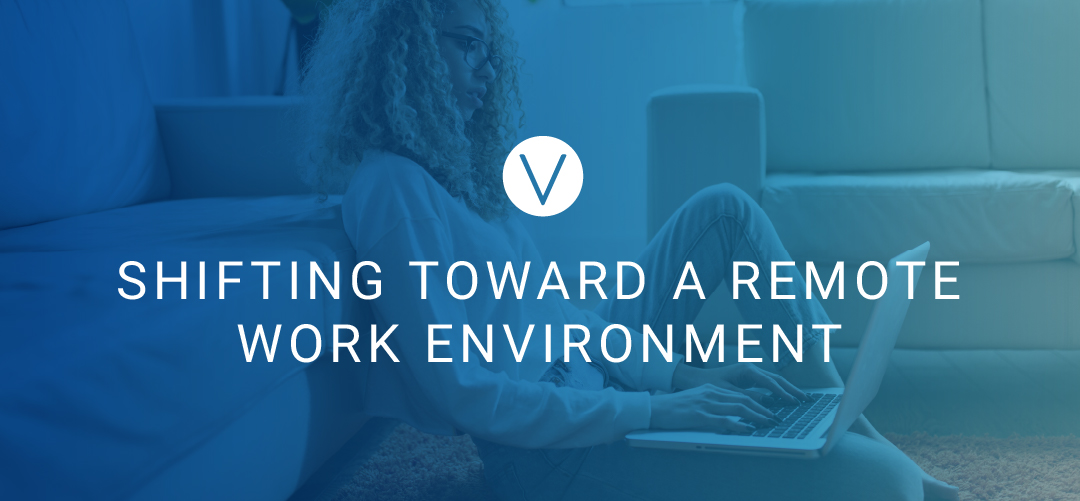 While it has been over a year for some companies that have fully transitioned to a remote work environment, many parts of the hiring, recruitment and onboarding process may still feel removed and disconnected. According to a Future of Work Survey conducted by Cielo, two-thirds of Talent Acquisition and HR leaders have used some sort of virtual recruitment tactics, and 82 percent intend to retain new methods indefinitely. Even as organizations begin to return to in-person work, many may choose to continue both remote work options and digital recruitment strategies.
While it has been over a year for some companies that have fully transitioned to a remote work environment, many parts of the hiring, recruitment and onboarding process may still feel removed and disconnected. According to a Future of Work Survey conducted by Cielo, two-thirds of Talent Acquisition and HR leaders have used some sort of virtual recruitment tactics, and 82 percent intend to retain new methods indefinitely. Even as organizations begin to return to in-person work, many may choose to continue both remote work options and digital recruitment strategies.
Virtual recruitment
Most organizations won’t need to completely reinvent the wheel when it comes to shifting to a digital recruitment strategy. Your current processes can continue to stay in place, but shift to a virtual/digital platform. For instance, if your hiring process typically includes multiple interviews, keep that consistent while altering to fit the different mediums (i.e. phone calls or video meetings versus in-person interviews).
If attending job events and fairs were a large part of your recruitment strategy, there are digital tactics you can use to bring a similar experience to potential employees. Plus, providing virtual content allows more people the opportunity to after the fact, which may help to expand and diversify your talent pool. Consider hosting a virtual event via Zoom or Facebook Live where you can:
- Promote across all digital platforms. You’ll maximize participation by including information on your website and posting to your social media pages.
- Select a variety of team members to appear. Candidates will be able to see and “meet” members of the team and ask questions.
- Virtual office tours. Take advantage of video communication by showing where new hirees will be working once able to.
- Cover relevant topics. Show your organization is up to speed on current trends and issues by hosting an event that also benefits attendees.
Create a virtual candidate experience
While applying for jobs online isn’t anything new, there are adjustments that will need to be made to ensure a virtual candidate experience is not only authentic, but effective. Start by ensuring your digital assets are up to par. Since candidates won’t be able to visit your office and meet in person with their potential coworkers, you’ll need to take this experience virtual. Assess your social platforms, your website and careers page to ensure they effectively showcase your brand and its people. If it’s not in your main website navigation already, consider moving your Careers so it’s easy to find for job seekers. Additionally, you’ll also want to beef up your company’s profile on job posting sites and respond to any reviews.
An integral part of a positive candidate experience is for the applicant to be well informed. Review your job descriptions to ensure they are reflective of any new remote work environment criteria or policies. After applicants fill out an application, it is important to keep the lines of communication consistent. For instance, you may want to set up a confirmation page or email so that applicants know their application has been received. This communication can also include an average time frame for when they will hear back and detail how the virtual interview process will move forward.
Virtual onboarding
Much like virtual recruiting, your virtual onboarding process should mirror your in-person procedure, with a few adjustments. The key is to have a solid plan about what your new employee will do on his or her first day and week of work. This could prove more challenging as more prep work will be needed to coordinate meet-and-greets, departmental “tours” or other traditions that are typically done in person.
Send out a company or department-wide welcome email introducing the new employee and encourage others to reach out and connect. If applicable, take them on a virtual tour of the office so they’ll get a feel of what their eventual workplace will be. Host a virtual team lunch or happy hour during their first few days to allow them to get to know one another in a non-meeting setting.
In addition to the team-building part of onboarding, it is also essential that your new hire feel informed and ready to do their job. Host short, but informative virtual sessions to go over your company’s mission and core values, as well as walking them through your employee handbook, internal policies, and benefits plans. Provide clear instructions for setting up any devices, programs and applications they might need, as well as how to access their pay stubs. You’ll also want to set up remote sessions with the new employee’s managers so they can overview their team, walk through their role, assign projects and set performance goals. It will be helpful for managers to set up a weekly check-in, especially the first few weeks, to cover any concerns, questions and to stay connected.
Elements of virtual recruiting and onboarding will likely continue to be an asset to hiring managers, even as we return back to the office. Evolving your current strategies to fit a remote work mold will allow you to be more flexible, reach more quality candidates and and attract digitally savvy employees to your team.

